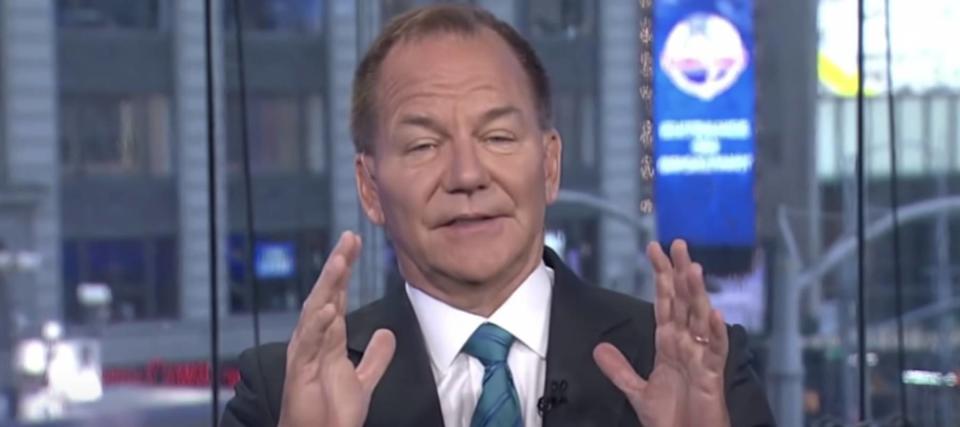Billionaire Paul Tudor Jones says you ‘can’t think of a worse environment’ for stocks and bonds — but here’s one simple strategy he’d employ right now

If you’re thinking about buying the dip in stocks, you might want to think again. According to Paul Tudor Jones, the billionaire founder of Tudor Investment Corporation, it’s still not the time to go on a shopping spree.
“You can’t think of a worse environment than where we are right now for financial assets,” he told CNBC on Tuesday, adding that “clearly you don’t want to own bonds and stocks.”
Instead of aiming for high returns, the hedge fund manager says protecting your money should be the priority. But if you still want to invest, he suggests one approach that might be worth considering.
“If there was a strategy that I would want to employ right now, if someone put a gun to my head, I’d say simple trend-following strategies.”
Trend-following simply involves buying an asset when its price trends up and selling it when its price trends down. The goal is to capture the continuation in the price movement.
Let’s take a look at three ways you might want to apply the strategy in today’s market.
Sign up for our MoneyWise newsletter to receive a steady flow of actionable ideas from Wall Street's top firms.
Energy
Fueled by rising commodity prices, energy was the S&P 500’s best-performing sector in 2021, returning a total of 53% vs the index’s 27% return. And that momentum has carried into 2022.
Year to date, the Energy Select Sector SPDR Fund (XLE) is up 37%, while the S&P 500 has tumbled roughly 13%.
XLE aims to track the performance of the S&P 500’s energy sector. If the positive momentum in energy prices continues, the ETF is a good bet to keep delivering market-topping returns.
There are also more direct ways to follow energy commodities. For instance, the United States Oil Fund (USO) offers exposure to oil futures and is up 40% in 2022. The United States Natural Gas Fund (UNG) tracks movements in natural gas prices, and has more than doubled year to date.
Agriculture
Slowing economic growth, paired with spiking inflation, generally doesn’t bode well for financial assets like stocks and bonds. But it could be an opportune time to check out agriculture.
No matter what the economy is doing, people need to eat.
For a convenient way to get broad exposure to the agriculture sector, check out the Invesco DB Agriculture Fund (DBA). It tracks an index made up of futures contracts on some of the most widely traded agriculture commodities — including corn, soybeans and sugar. The fund is up 11% in 2022.
You can also use ETFs to tap into individual agricultural commodities. The Teucrium Wheat Fund (WEAT) and the Teucrium Corn Fund (CORN) have gained 44% and 35%, respectively, in 2021.
Rising interest rate plays
The Fed is raising interest rates to tame inflation. Higher rates increase the cost of borrowing, which could hurt consumers and businesses. At the same time, higher interest rates imply a higher risk-free rate of return, making stocks less attractive.
However, if you own investments that are well-positioned for a rising interest rate environment, the Fed’s hawkishness could be a positive for your portfolio.
It might make sense to look into the ProShares Equities for Rising Rates ETF (EQRR). The fund tracks the performance of the Nasdaq U.S. Large Cap Equities for Rising Rates Index. As the name suggests, this ETF aims to outperform traditional large-cap indexes (like the S&P 500) in periods of increasing U.S. Treasury interest rates.
While EQRR is up just slightly year to date, it has soundly thumped the S&P 500’s double-digit percentage drop over the same time frame.
Sign up for our MoneyWise newsletter to receive a steady flow of actionable ideas from Wall Street's top firms.
More from MoneyWise
This article provides information only and should not be construed as advice. It is provided without warranty of any kind.

 雅虎香港財經
雅虎香港財經 